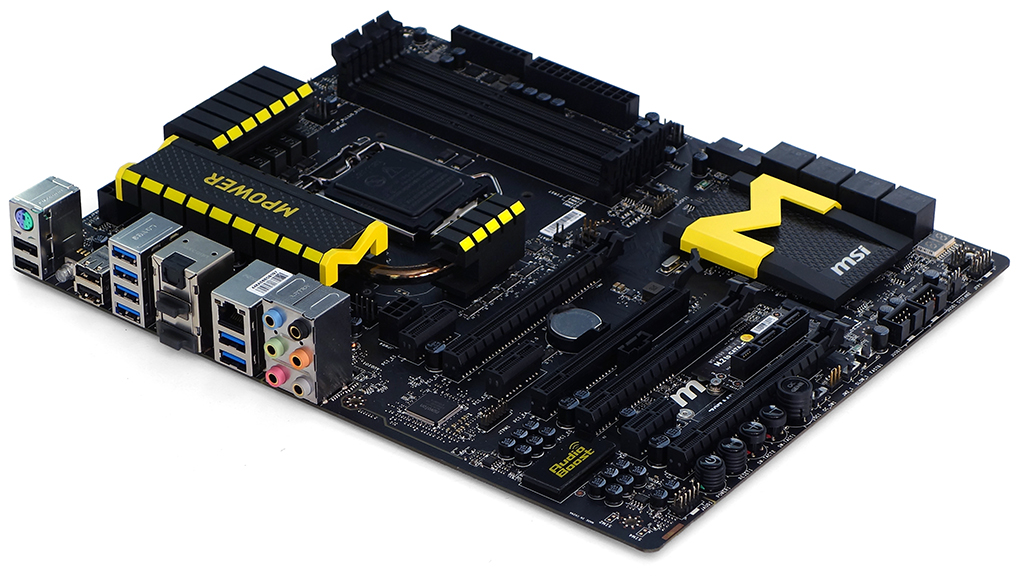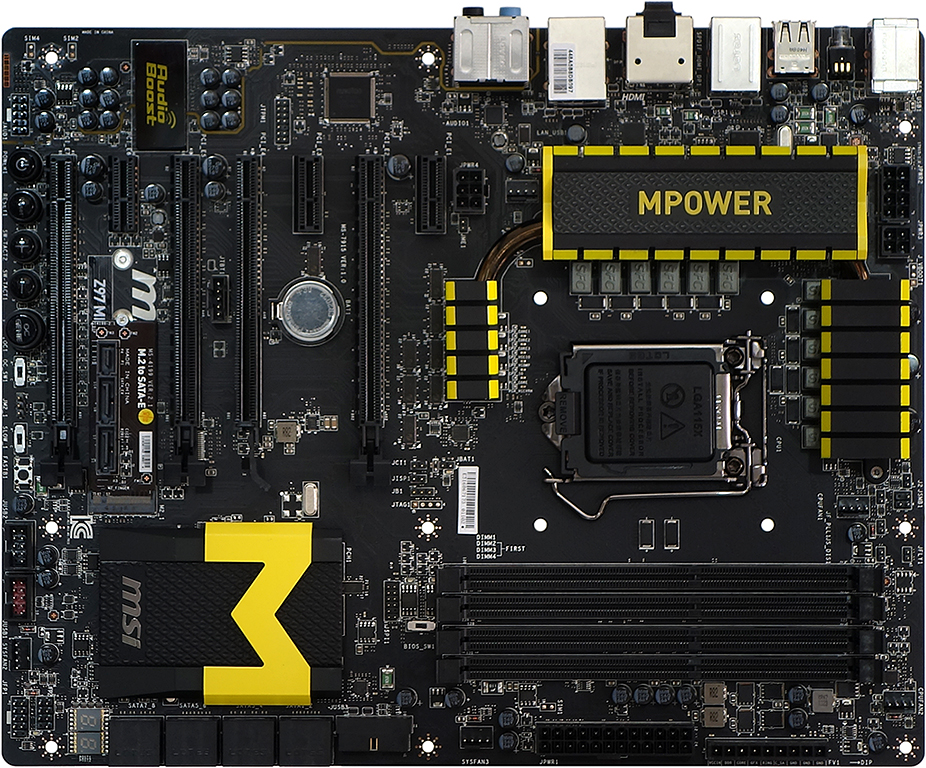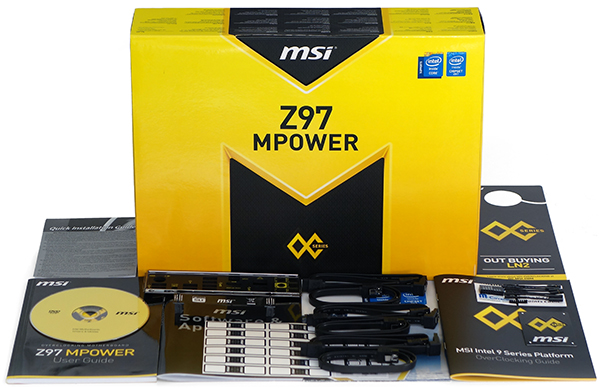Five Z97 Express Motherboards, $160 To $220, Reviewed
Intel’s “mainstream” socket continues to spawn enthusiast parts with the company’s fastest-ever gaming-oriented CPU. You’ll probably want a feature-packed motherboard for that, and five companies stepped up to show off the best of the sub-$220 segment.
MSI Z97 MPower
MSI cleans up the I/O panel of its Z97 MPower by removing both DVI and VGA, instead focusing on outputs like HDMI and DisplayPort without sacrificing its six USB 3.0 ports and four USB 2.0 ports. Even the analog audio section features six stereo jacks, and the clear-settings button is clearly visible. Yet, there’s still a hole in the port arrangement. What’s missing?
The Z97 MPower is the only board in today’s comparison featuring a single networking controller. Even Asus covers secondary networking via a wireless controller, and I have to imagine that most enthusiasts will find the combination of GbE and 802.11ac superior to the implementations of MSI's other competitors. Even though a second gigabit Ethernet port wouldn’t have been a high-priced add-in, we were still a little surprised that the Z97 MPower costs slightly more than most competing products. So, we began looking for other value-boosting features.
There is, for example a SATA Express adapter card in the M.2 slot, a value add that MSI also sells separately. MSI even said a month ago that it would begin shipping the Z97 MPower with that adapter bundled. However, Newegg still shows the original adapter-free package.
The Z97 MPower also offers a row of voltage detection points, eight SATA ports, and several buttons and switches to ease overclocking from an open bench. While most of those features are also offered by Gigabyte, MSI’s O/C Genie and base clock control buttons stand apart. Some tuners might even like that MSI’s voltage detection points have pins rather than solder dots, and that the installation kit includes a set of cables for connecting those pins to an external voltmeter.
Comparisons to Gigabyte’s sample don’t end there. MSI is the second company in this round-up to offer x8/x4/x4 pathway configurations to host three PCIe 3.0 graphics cards in CrossFire. Nvidia’s resistance to enabling SLI on four-lane links isn’t brand-specific, so it affects both competitors equally. The same caveat also applies: enthusiasts who want the second PCIe 3.0 slot to retain eight lanes (and SLI capability) must leave the bottom slot empty.
MSI adds a fourth x16-length slot at the center of the Z97 MPower, which shares three of its four PCIe 2.0 lanes with the three x1 slots. Using any x1 slot means treating this one equally, as a x1 slot. And if you actually need to install an extra graphics card along with some x1 cards, at any bandwidth cost, MSI uses an open-ended connector in the bottom x1 slot.
Like most competitors, M.2 and SATA Express early adopters are forced to give up two of the chipset’s SATA 6Gb/s ports in order to keep their preferred interface active. Likewise, MSI relies on a PCIe 2.0 single-lane controller to serve up the board’s seventh and eights SATA 6Gb/s ports at a combined 5 Gb/s.
Get Tom's Hardware's best news and in-depth reviews, straight to your inbox.
MSI tackles the problem of stiff USB 3.0 front-panel cable ends getting in the way by using a right-angle header, conveniently placed above the top-most SATA ports, where the cable can snake behind the lower drive cage of most enthusiast-class ATX cases. It also moves the front-panel audio header around ½” forward from the bottom-rear corner, as it happens that many cases have a cable that’s ½” too-short to reach there. Many builders will still need to perform stretching exercises to get that cable over its header, however.
The Z97 MPower costs only $5 more than its closest competitor, yet has a similar feature set. Fortunately, it also includes two extra SATA cables for a total of six. An extra $2.50 per cable isn’t bad.
-
Memnarchon At this price Asus could send a ROG product (Maximus VII Hero). I wonder why they choose to send the Z97-Pro instead...Reply -
bigshootr8 ReplyAt this price Asus could send a ROG product (Maximus VII Hero). I wonder why they choose to send the Z97-Pro instead...
My thoughts you can find the hero board within that price range quite easy. http://pcpartpicker.com/part/asus-motherboard-maximusviihero -
Drejeck I'd like some ITX Z97 and H97 with M.2 reviewed.Reply
I'm buying the Asus Z97i-plus because it just mount a 2x M.2 2280 and 2260, and all other connectivity goodness, uninterested in overclocking unless the broadwell i5 K consume less than 90W :D -
mapesdhs I recently bought a Z97I-Plus. Being so used to EATX boards as of late, I was a tadReply
stunned at how tiny even the packing box is. :D Just pairing it up with a G3258
initially to see how it behaves. Pondering a GTX 750 Ti, but kinda hoping NVIDIA
will release a newer version in Sept.
Ian.
-
Crashman Reply
They probably wanted to win based on features for the money? We know that the Wi-Fi ac has A $50 WI-FI CONTROLLER, what does the Hero add that's worth $50?13953852 said:At this price Asus could send a ROG product (Maximus VII Hero). I wonder why they choose to send the Z97-Pro instead...
-
lp231 The Asus ROG boards have a red line that lights up showing the audio path through it's build in LEDs, but the mainstream Z97 don't. I had a chance to take a look at one of the Asus Z97 board and took my phone's flash to shine in on it. The color was somewhat yellowish green and it looks really nice.Reply -
g-unit1111 I have a Z97 Extreme 6, it's a very nice board and it's definitely worthy of the approval award.Reply -
TechyInAZ Nice boards!! I love the gigabyte model but I like asus more because yellow heatsinks just don't fit in my opinion.Reply -
Memnarchon Reply
Hello. I think there are more reasons to buy a ROG product, instead of a Wi-Fi controller...13956156 said:
They probably wanted to win based on features for the money? We know that the Wi-Fi ac has A $50 WI-FI CONTROLLER, what does the Hero add that's worth $50?13953852 said:At this price Asus could send a ROG product (Maximus VII Hero). I wonder why they choose to send the Z97-Pro instead...
Better audio quality.
Better MOF-SETs.
Better inductors.
ROG BIOS.
Generally ROG boards have better quality parts.
But in the end we need the reviewers (like you) to review as many products as they can, so we can see the performance difference between them.



